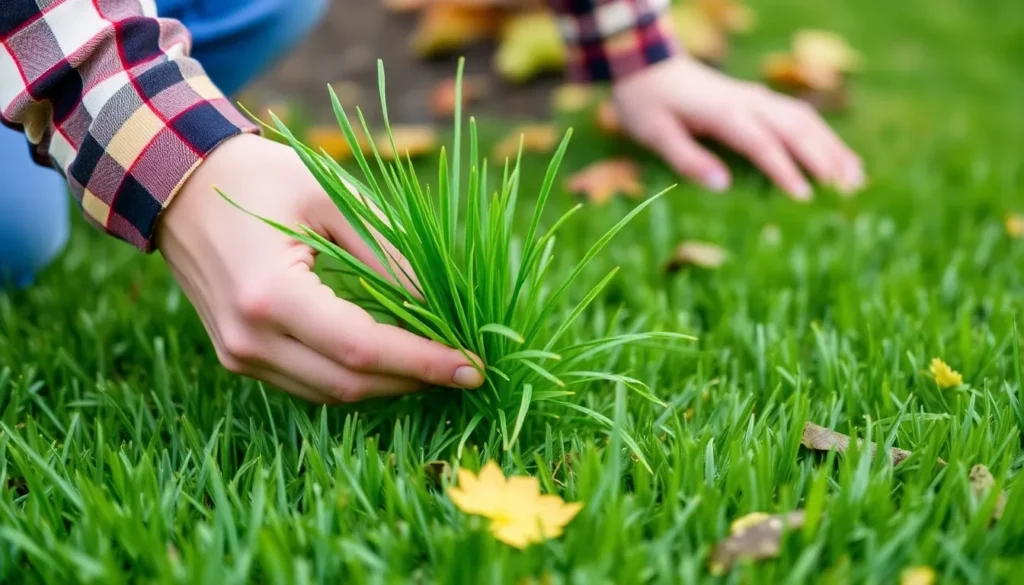Growing New Grass for Your Lawn in Fall Tips

Planting new grass in the fall can be a rewarding endeavor for homeowners looking to establish a lush lawn. However, understanding the intricacies of grass seed germination and the necessary care during this critical period is essential for success. This article will guide you through the entire process, ensuring your new grass thrives and enhances your outdoor space.
Grass seeds require specific conditions to germinate successfully. The journey begins when seeds absorb moisture, triggering the growth process. However, various factors can influence this journey, making it crucial to provide the right environment for your seeds. Whether you’re a novice gardener or an experienced landscaper, learning about these conditions will empower you to cultivate a healthy lawn.
Understanding Grass Seed Germination
Germination is the process by which grass seeds sprout and begin to grow. This process typically occurs when the seeds absorb sufficient moisture, signaling them to break dormancy and initiate growth. However, the success of this process is highly dependent on several factors, including:
- Moisture Levels: Grass seeds need consistent moisture to germinate properly. Too little water can cause seeds to dry out, while too much can lead to rot.
- Soil Temperature: Different grass species require specific soil temperatures for optimal germination. For instance, cool-season grasses thrive in temperatures between 50°F and 65°F.
- Soil Composition: Well-aerated, nutrient-rich soil promotes healthy seed germination and root establishment.
By managing these factors, you can significantly increase the chances of a successful germination process.
Preparation Steps Before Planting Grass Seeds
Before sowing your grass seeds, there are several essential steps to ensure a successful planting:
- Soil Testing: Conduct a soil test to determine pH and nutrient levels. This information will help you amend the soil appropriately.
- Soil Preparation: Loosen the top 2-3 inches of soil using a rake or tiller. This helps improve aeration and seed-to-soil contact.
- Weed Control: Remove existing weeds and debris to reduce competition for resources.
Taking the time to prepare your soil properly will set the stage for healthy grass growth.
Best Practices for Watering Grass Seeds
Watering is critical in the early stages of grass growth. Here’s how to effectively water your newly seeded lawn:
- Initial Watering: Water the area thoroughly for about 30 minutes to provide an initial soak for the seeds.
- Frequency: For the first week, aim for light watering 2-3 times per day, especially in hot or windy conditions.
- Method: Use a gentle spray nozzle or oscillating sprinkler to avoid washing away the seeds.
Consistent moisture is vital, but it’s essential to avoid over-saturating the soil, as this can hinder oxygen availability for the seeds.
Follow-Up Care as Grass Sprouts
Once your seeds begin to sprout, it’s essential to adjust your care routine:
- Keep Soil Moist: Maintain a consistently moist surface until all seeds have germinated.
- Avoid Disturbance: Minimize foot traffic on the newly seeded area to maintain seed-to-soil contact.
- Temperature Awareness: Monitor soil temperatures, as cooler conditions may delay germination.
Grass seeds germinate at different rates, so patience is key. Continue to care for the seedlings even after they become visible, as their roots are still developing.
How to Water After Aeration and Overseeding
If you’re aerating and overseeding your lawn, proper watering is crucial for successful seed germination:
- Thorough Initial Watering: Water immediately after aeration to help the seeds settle into the soil.
- Duration: Depending on your sprinkler system, run the water for about 6 minutes at each location to ensure good seed contact with the soil.
- Post-Aeration Care: Follow up with consistent light watering to keep the soil moist but not soaked.
By following these guidelines, you’ll provide the best conditions for your new grass to thrive. For additional insights, consider watching this informative video on fall lawn care practices:
Final Tips for Successful Lawn Establishment
Establishing a new lawn can be a long process, but here are some final tips to maximize your success:
- Mowing: Wait until the grass reaches a height of 3.5 to 4 inches before mowing for the first time. Set your mower to a height of 3 inches.
- Avoid Chemicals: Refrain from using herbicides or pesticides for at least the first few months to allow the grass to establish.
- Regular Maintenance: Establish a regular watering and mowing schedule to promote healthy growth.
With careful attention to watering, soil preparation, and ongoing maintenance, your lawn can flourish beautifully in the fall. Embrace the process, and enjoy the lush greenery that comes with a well-cared-for lawn!
Para ayudarte a preparar tu jardín para el otoño, a continuación te presentamos un video con consejos prácticos sobre cómo cultivar nuevo césped en esta temporada.
 Heirloom Vegetable Varieties for Your Garden
Heirloom Vegetable Varieties for Your Garden Ochre Solenne de la Fouchardière: A Unique Perspective
Ochre Solenne de la Fouchardière: A Unique Perspective Mistakes to Avoid When Growing Cut Flowers
Mistakes to Avoid When Growing Cut Flowers How do I make my plants healthy again with proven tips
How do I make my plants healthy again with proven tips What is a quick trick for happier plants: Expert tips for thriving greenery
What is a quick trick for happier plants: Expert tips for thriving greeneryIf you want to know more about similar articles like Growing New Grass for Your Lawn in Fall Tips you can visit category Plant Care.
Deja una respuesta